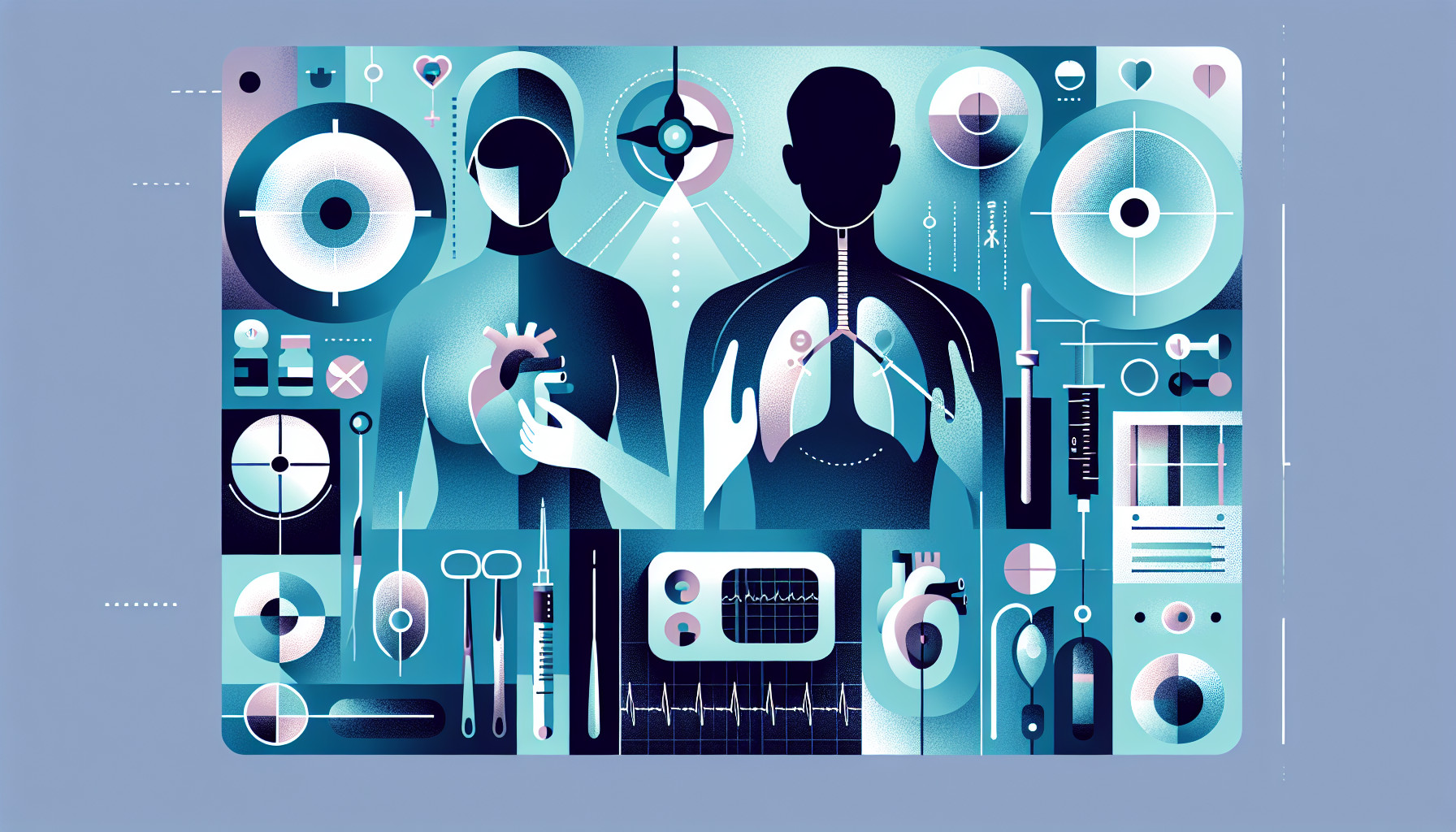Our Summary
This research paper discusses the use of Robotic-Assisted Technique in Thoracic Surgery (RATS) in Germany. It explains that the adoption of this method was initially slower in Germany compared to other countries, but there is now a lot of potential for its use to increase.
RATS has many benefits. It uses special tools that can move like a human hand, but with a wider range of motion. The robot can replicate the surgeon’s movements perfectly, and it has a feature to reduce any shaking. It also provides a 3D view that can magnify images up to 10 times more than normal tools used in chest surgeries.
However, there are also some drawbacks. For instance, the surgeon operates the robot from a distance and is not in a sterile environment during the surgery. This could be problematic in emergencies, such as severe bleeding, where the surgeon may need to switch to a traditional surgical method.
All surgical robots are designed using a master-slave system. The surgeon controls the master system, and the robot (the slave system) responds to the surgeon’s movements.
RATS is mainly used for surgeries involving chest tumors, diaphragm repairs, and lung resections.
The paper also suggests that the future may see the integration of virtual and augmented reality technology in training and planning for RATS surgeries.
FAQs
- What are the benefits of using Robotic-Assisted Technique in Thoracic Surgery (RATS)?
- What potential issues could arise from the surgeon operating the robot from a distance during surgery?
- What types of surgeries is the Robotic-Assisted Technique mainly used for?
Doctor’s Tip
A helpful tip a doctor might tell a patient about thoracic surgery is to discuss with their surgeon the potential benefits and risks of using robotic-assisted techniques, such as RATS. It’s important for the patient to understand how this technology can improve surgical outcomes and recovery time, but also be aware of any limitations or potential complications associated with using robotic tools during their procedure. Being well-informed and having open communication with their healthcare team can help the patient feel more confident and prepared for their thoracic surgery.
Suitable For
Patients who are typically recommended for thoracic surgery include those with lung cancer, esophageal cancer, mediastinal tumors, chest wall tumors, diaphragmatic hernias, and severe lung infections. Thoracic surgery may also be recommended for patients with conditions such as emphysema, severe COPD, or pulmonary hypertension.
Overall, patients who are in good overall health and have a favorable prognosis for the surgical procedure are usually recommended for thoracic surgery. It is important for patients to discuss their specific condition and treatment options with their healthcare provider to determine if thoracic surgery is the best course of action for them.
Timeline
Before thoracic surgery, a patient will typically undergo a series of diagnostic tests such as chest X-rays, CT scans, and blood tests to determine the exact nature of their condition. They may also meet with various healthcare professionals to discuss the surgery, including the surgeon, anesthesiologist, and nurses.
On the day of surgery, the patient will arrive at the hospital and be prepped for the procedure. This may involve changing into a hospital gown, having an IV line inserted, and meeting with the surgical team to go over the details of the operation.
During the surgery, the patient will be under general anesthesia and will not be conscious. The surgeon will make incisions in the chest to access the affected area and perform the necessary procedure, whether it be removing a tumor, repairing the diaphragm, or resecting a portion of the lung.
After the surgery, the patient will be taken to a recovery room where they will be closely monitored as they wake up from anesthesia. They may experience pain, discomfort, and fatigue in the days following the surgery, and will likely need to stay in the hospital for a few days for observation.
Once discharged, the patient will continue to recover at home and will need to follow specific instructions from their healthcare team regarding wound care, pain management, and activity restrictions. They may also need to attend follow-up appointments to monitor their progress and ensure that they are healing properly.
What to Ask Your Doctor
Some questions that a patient should ask their doctor about thoracic surgery using the Robotic-Assisted Technique (RATS) include:
- What are the benefits of using robotic-assisted surgery for my specific condition?
- Are there any specific risks or drawbacks associated with RATS compared to traditional surgical methods?
- How experienced are you and your team in performing RATS procedures?
- Can you explain the process of RATS surgery and how it will be performed on me?
- What is the expected recovery time and outcome for RATS surgery compared to traditional surgery?
- Are there any alternative treatment options to RATS surgery that I should consider?
- Will I need any additional tests or preparation before undergoing RATS surgery?
- How will my post-operative care and follow-up appointments be handled after RATS surgery?
- What is the long-term success rate of RATS surgery for my condition?
- Are there any potential complications or side effects that I should be aware of before undergoing RATS surgery?
Reference
Authors: Bedetti B, Zalepugas D, Arensmeyer JC, Feodorovici P, Schmidt J. Journal: Pneumologie. 2023 Jun;77(6):374-385. doi: 10.1055/a-1854-2770. Epub 2023 Jun 13. PMID: 37311471
